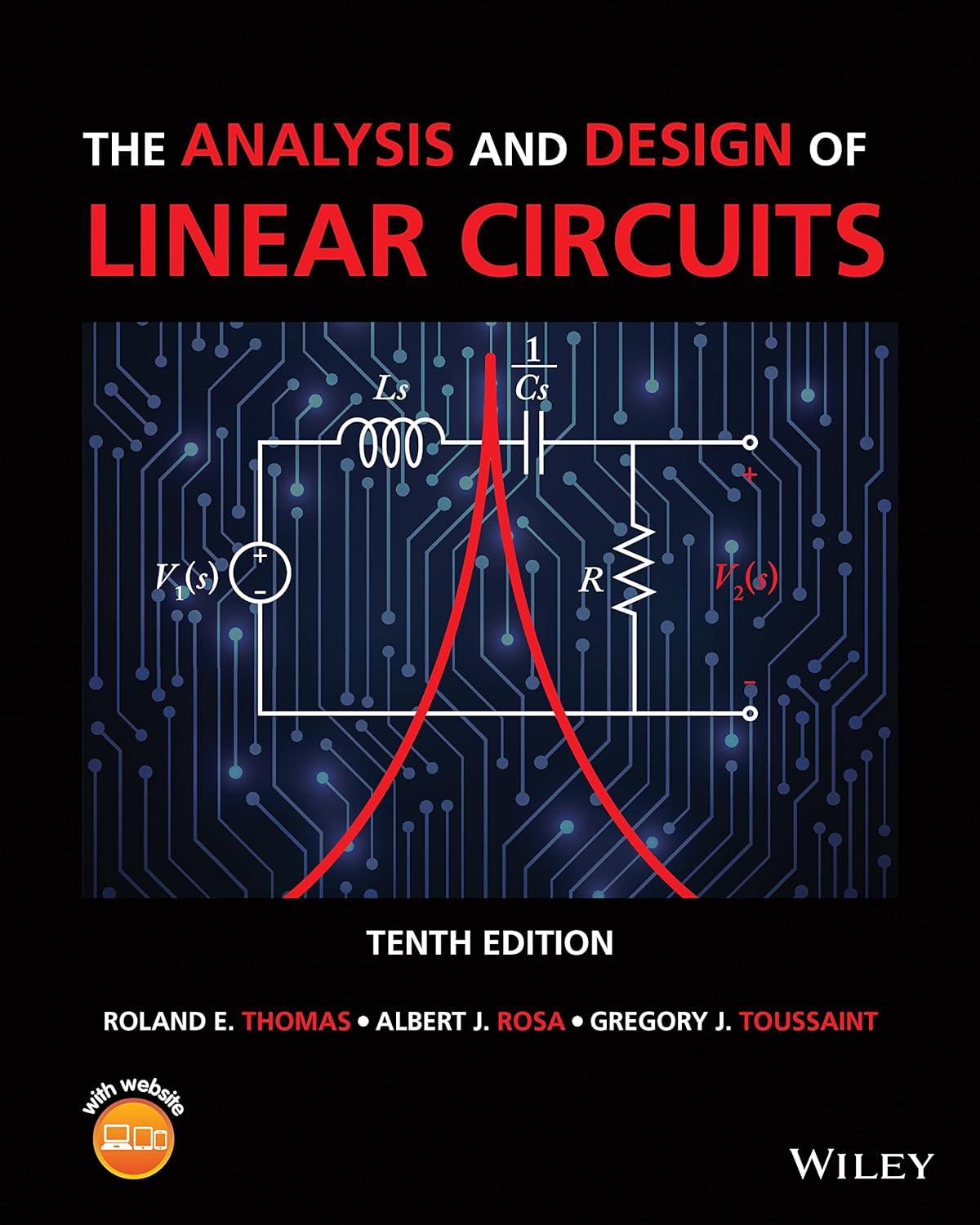When a transform (F) ( (s) ) has widely separated poles, then those closest to the (j)-axis
Question:
When a transform \(F\) ( \(s\) ) has widely separated poles, then those closest to the \(j\)-axis tend to dominate the response because they have less damping. An approximation to the waveform can be obtained by ignoring the contributions of all except the dominant poles. We can ignore the other poles simply by discarding their terms in the partial fraction expansion of \(F(s)\). The purpose of this example is to examine a dominant pole approximation of the transform

(a) Construct a partial-fraction expansion of \(F(s)\) and find \(f(t)\).
(b) Construct a pole-zero diagram of \(F(s)\) and identify the dominant poles.
(c) Construct a dominant pole approximation \(g(t)\) by discarding the other poles in the partial fraction expansion in part (a).
(d) Plot \(f(t)\) and \(g(t)\) and comment on the accuracy of the approximation.
Step by Step Answer:

The Analysis And Design Of Linear Circuits
ISBN: 9781119913023
10th Edition
Authors: Roland E. Thomas, Albert J. Rosa, Gregory J. Toussaint





